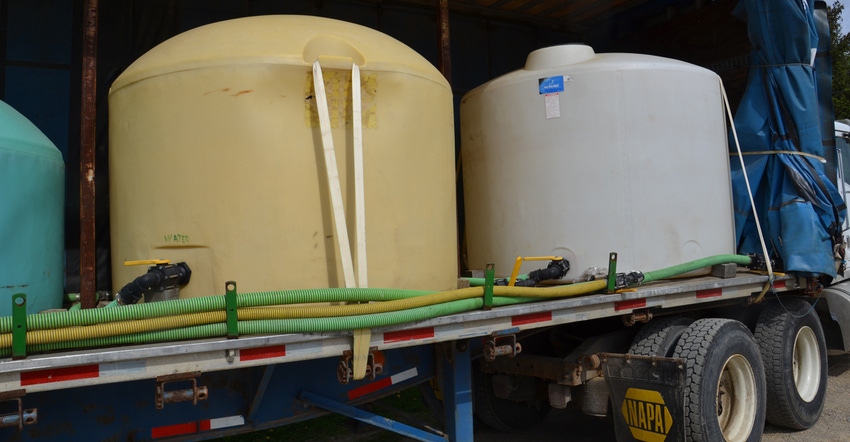
You’re at a farm auction and they’re selling used poly tanks. You buy two tanks, both rated to hold 1,000 gallons. But when you pull water to fill your sprayer from one vs. the other, you always cover a couple of acres more with the first tank. Does your sprayer have a problem?
That’s not likely, says Fred Whitford, director of Purdue University Pesticide Programs. It’s more likely the actual capacity of the two tanks you purchased is different. One may hold more than the rated capacity.
“I’ve found it’s not unusual to find that poly tank capacities are off from the rated capacity,” Whitford says. “Sometimes they’re off by a lot. I’ve found a tank which held 150 gallons more than it was rated for, and in another case, a tank that held 100 gallons less that it was rated for.”
Is that a big deal? “It is if you’re gauging how much water you’re putting into the spray mix off of those rated capacities, and then dumping in herbicide based on what they are supposed to hold,” Whitford says.
To keep math simple, suppose you source water from a poly tank rated at 1,000 gallons, and you apply 20 gallons of spray volume per acre. One tank should allow you to cover 50 acres.
If it really holds 1,100 gallons, you will cover 55 acres, Whitford says. The amount of herbicide you added was 5 acres short. It could make a difference in weed control, especially on hard-to-control weeds or weeds the herbicide is only marginally effective against in the first place.
On the flip side, suppose the tank only holds 900 gallons. Now you’re going to spray 45 acres instead of 50 in the same scenario. You’ll control the weeds, but you just spent more on herbicide than you needed to.
Simple solutions
One solution is obvious, Whitford notes. You could buy a water meter to fill the poly tanks. If the meter is accurate, you will know how many gallons you have, and can add herbicide accordingly to make the right concentration in the spray mix.
There’s another option if you don’t want to purchase a water meter, Whitford says. Using your ag retailer’s scales, weigh the trailer with the tank empty and then weigh it once the poly tank is full of water. The empty weight plus 1,000 gallons of water at 8.345 pounds per gallon should be the new total weight. Since water is a heavy product, a few gallons up or down will show on the scales, Whitford says.
Suppose the difference in weight between full and empty is 8,500 pounds. Dividing by 8.345 pounds per gallon, you have 1,018.6 gallons of water in the tank. In today’s world, that’s about an extra acre of material you should add to the mix, Whitford concludes.
About the Author(s)
You May Also Like




